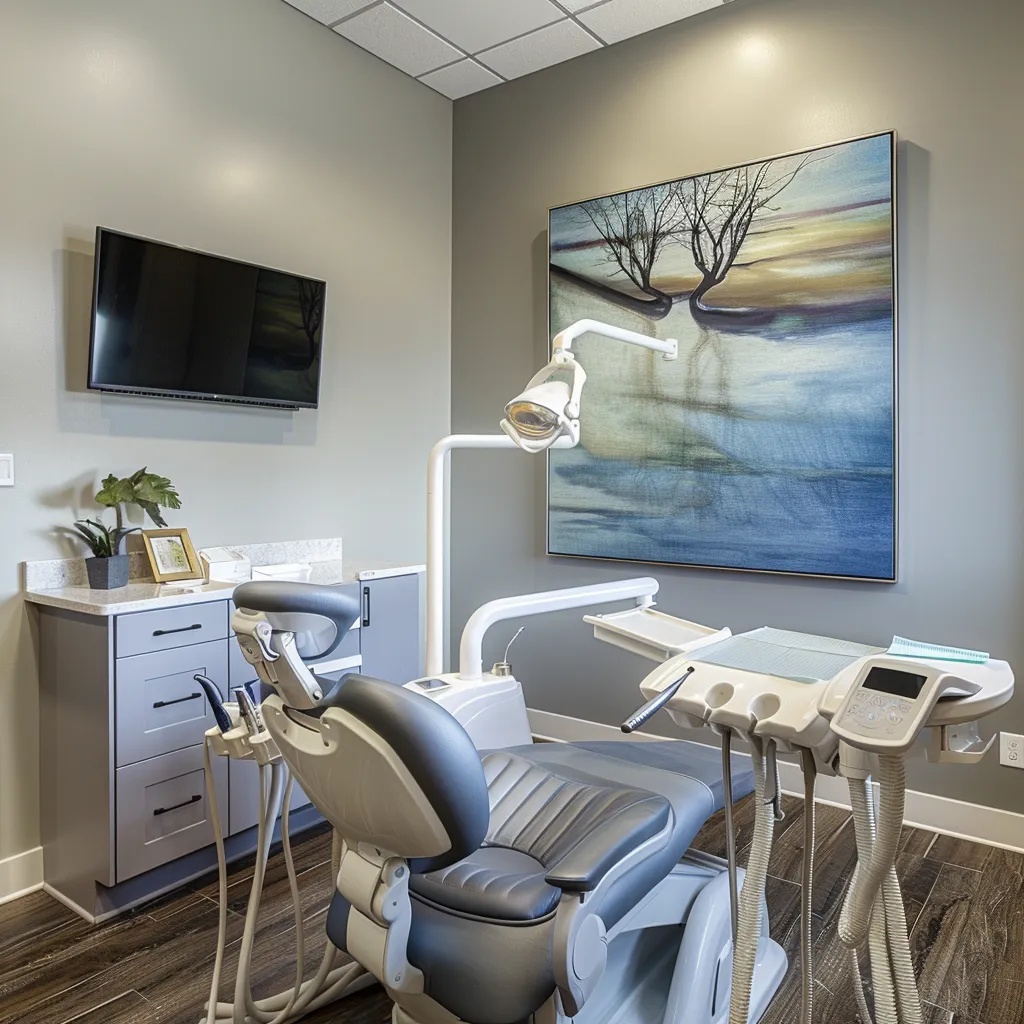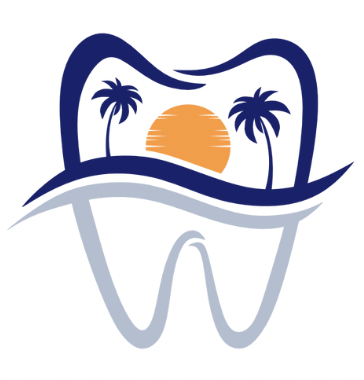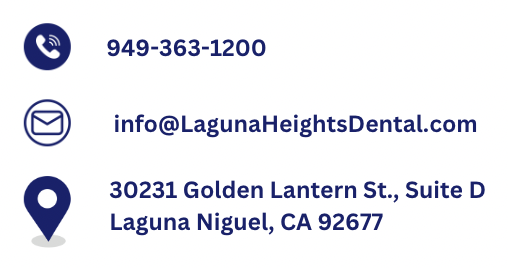“Dental implants may look small, but the healing process plays a big role in their success.”
At Laguna Heights Dental, we know that placing the implant is just one part of the journey. What happens afterward—how you heal and how you care for your implant—can make all the difference in how long it lasts and how comfortable it feels. That’s why we’re committed to helping you understand not just what to expect, but how to make recovery smoother, faster, and less stressful.
Whether you’re preparing for your implant surgery or you’re a few days into recovery, this article will guide you through every step.
What to Expect Right After Dental Implant Surgery
Most dental implant procedures are outpatient, meaning you’ll go home the same day. Before you leave our office, we’ll walk you through post-op instructions and give you all the tools and info you need. The first 24 to 72 hours are the most critical window for healing. You’ll likely feel some swelling, mild bleeding, and a bit of soreness. These symptoms are normal and typically peak within the first two to three days.
You might feel groggy from local anesthesia or sedation used during the procedure, but that will wear off quickly. Rest is the name of the game for the first day. This is not the time to run errands, clean the house, or jump back into your routine. Give yourself permission to take it easy, and your body will thank you.
Managing Pain and Swelling in the First Few Days
Some discomfort after surgery is expected, but it shouldn’t be overwhelming. Most patients find that over-the-counter medications like ibuprofen or acetaminophen manage the pain well. In certain cases, we may prescribe medication to help you stay ahead of the discomfort.
Applying a cold compress to the cheek near the implant site can significantly reduce swelling and help with discomfort. Alternate the compress every 15 minutes during the first day. Avoid hot drinks, spicy foods, and excessive movement of the mouth during this time. Stick to soft, cool meals like yogurt, smoothies, and applesauce.
Hydration is also key. Drink plenty of water, but avoid straws for at least a week. The suction can disrupt the clotting process and delay healing.
Caring for the Surgical Site Without Causing Damage
One of the most common concerns patients have after dental implant surgery is how to clean their mouth without disturbing the surgical site. The key is to be gentle but consistent. On the first day, avoid brushing the area completely and simply rinse your mouth with lukewarm salt water several times a day.
By the second day, you can resume brushing your other teeth normally, using a soft-bristled toothbrush. Avoid direct brushing over the implant until we advise otherwise. Floss carefully, and if needed, use a water flosser at the lowest setting to remove debris without pressure.
We may also recommend a special antimicrobial rinse to help prevent infection. Following all post-op hygiene instructions can reduce your risk of complications.
Eating After Implant Surgery: What to Eat and What to Skip
Your diet will look a little different for the first week or so. The goal is to avoid putting pressure on the implant site while giving your body the nutrients it needs to heal. Stick to soft, easy-to-chew foods like scrambled eggs, mashed potatoes, well-cooked pasta, and steamed vegetables.
Avoid hard, crunchy, or sticky foods that could put stress on the surgical area. Raw vegetables, chips, hard bread, and candies should be saved for later. You’ll also want to steer clear of carbonated drinks and alcohol, which can irritate the surgical site and delay healing.
Eating small, frequent meals can help keep your energy up without overwhelming your mouth. As healing progresses, we’ll guide you on when to start adding more solid foods back into your diet.
Resting and Activity Guidelines During Recovery
Rest plays a huge role in how quickly and comfortably you heal. For the first few days, limit your physical activity. Avoid lifting anything heavy, bending over, or doing anything that raises your heart rate significantly.
If you’re used to regular workouts, give yourself at least 72 hours before slowly easing back into your routine. If your job is physically demanding, consider taking a few extra days off. Your implant needs time to settle, and rest helps keep inflammation and complications to a minimum.
Elevating your head while sleeping can reduce swelling and support circulation. Prop yourself up with a couple of pillows or sleep in a reclined position for the first few nights.
Monitoring for Signs of Trouble
Most patients heal with few or no complications, but it’s still important to know the signs of potential problems. A little discomfort and swelling are normal. However, if pain worsens after the third day or swelling continues to increase, give us a call.
Other signs that something may be off include unusual bleeding, pus near the implant, a foul taste in your mouth, or a feeling that the implant is loose. Fever and chills may indicate an infection. These symptoms don’t always mean failure, but they do require prompt attention.
The sooner we catch an issue, the easier it is to fix. We encourage you to reach out with any concerns—there’s no such thing as a silly question when it comes to your health.

Long-Term Healing: What Is Osseointegration?
The full healing process doesn’t stop when the swelling goes down. The real magic happens below the surface, in a process called osseointegration. This is when the jawbone grows around the implant, locking it in place and giving it long-term stability.
Osseointegration typically takes three to six months, depending on your bone quality, overall health, and where the implant was placed. During this time, the implant fuses with the bone to create a strong foundation for your future crown, bridge, or denture.
We’ll monitor this healing process closely with follow-up appointments and imaging. Once integration is confirmed, we’ll move on to the final step—placing your permanent restoration.
Supporting Long-Term Success With Daily Habits
Once your implant is fully healed, it should look and function just like a natural tooth. But that doesn’t mean you can forget about it. The gum and bone surrounding your implant are still susceptible to inflammation and infection if not cared for properly.
Brush twice a day using a soft-bristle toothbrush and non-abrasive toothpaste. Floss once a day, being careful not to snap the floss against your gumline. Consider using an implant-specific floss or a water flosser to help clean hard-to-reach areas.
Don’t skip your routine dental visits. These checkups allow us to clean around the implant and check for early signs of problems. If you grind your teeth at night, wearing a nightguard can help protect your new implant from unnecessary pressure and wear.
Why Choose Laguna Heights Dental for Implant Care
At Laguna Heights Dental, we don’t just treat smiles—we build relationships. From your first consultation through final placement and maintenance, we’re here to support your journey every step of the way.
We use advanced tools like 3D imaging and guided implant surgery to ensure accuracy and comfort. Our recovery plans are tailored to your unique needs, and we’ll always take the time to answer your questions in a way that’s easy to understand.
You’re not just getting a dental implant—you’re gaining a team committed to your health, comfort, and confidence.
Let’s Get You On the Path to Healing
Dental implant surgery is a big step—but you don’t have to do it alone. With a little patience and the right care plan, your recovery can be smooth, predictable, and pain-free.
If you’re preparing for a dental implant or have questions about your recovery, we’re here to help. Call Laguna Heights Dental to schedule an appointment or talk with our team about post-op support. Your smile is in good hands.
Schedule your consultation Today!
Laguna Heights Dental
28202 Cabot Rd, Suite 600 Laguna Niguel, CA 92677
See More Reviews From Laguna Height Dental. View information about local places in our community. Get Driving Directions to Our Practice
Questions Patients Ask
Can I wear my denture during implant recovery, or should I leave it out?
In most cases, we recommend not wearing a denture for the first few days after surgery, especially if it rests on or near the implant site. Pressure from the denture could interfere with healing or disturb the implant placement. If you have a temporary appliance, we’ll give you personalized instructions. Some dentures may be adjusted to avoid the surgical site or fitted with a soft liner for added comfort. We’ll always let you know what’s safe based on your treatment plan.
What should I do if I accidentally chew on the implant side too early?
Don’t panic—but do stop and switch to the other side immediately. Light, accidental pressure isn’t usually enough to cause damage, but repetitive force can disrupt early healing. If you notice pain, bleeding, or swelling afterward, call us right away so we can take a look. We may recommend a soft diet for a few more days to allow the area to settle. It’s best to avoid that side completely until we confirm healing is on track.
How long should I wait before flying or traveling after implant surgery?
We usually recommend waiting at least 5 to 7 days before flying, especially if you’re traveling internationally or to high altitudes. Air pressure changes can increase swelling or discomfort, and you’ll want to be close to our office in case of complications. If travel is unavoidable, let us know ahead of time so we can schedule a follow-up and give you extra guidance. With proper precautions, short trips are often manageable once the initial healing phase has passed.
Related Articles
Preparing for Dental Implant Surgery, After Care for Implants, Dental Implants Pricing Guide, Implants Vs Traditional dental, Traditional Dental Implants, Dental Implants, Same-Day Dental Implants, Affordable teeth implants, Dental implants surgery, Dentures with implants, Full Mouth Dental Implants, Mini Dental Implants, Zirconia Dental Implants, Dental Implant Success, Dental Implant Types, Dental Implant Candidates, Dental Implant Complications, Dental Implant Maintenanc, Dental Implant Cost Factors, Dental Implant Failures, Dental Implant Recovery





